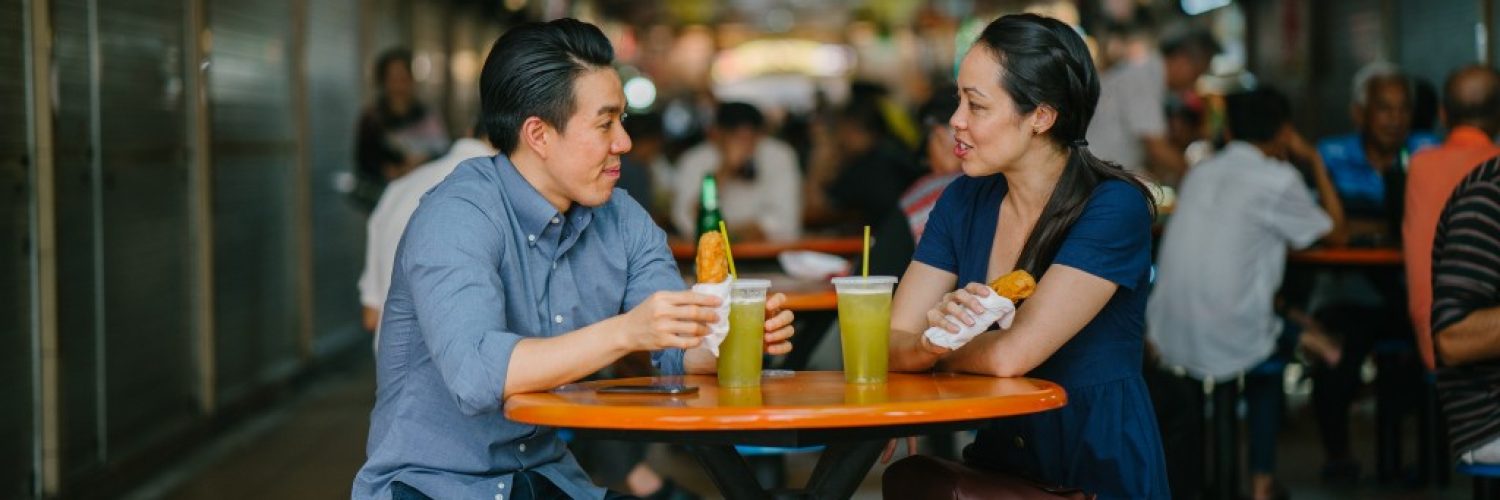Are you travelling to Singapore on a budget? Then visiting hawker centres are a must if you want delectable but affordable dining. You’ll spoil for so many choices while immersing in an authentic Singaporean culinary atmosphere.
But did you know that hawker food centres are not just places to eat in Singapore? They’re very much embedded in its culture and history.
A Heritage and a Way of Life
Hawker centres are an integral part of everyday life in Singapore. Every centre is a community where people from all walks of life meet for good food and conversation. Singapore is a melting pot of cultures: Chinese, Malay, Indian, Arab, and people for many parts of the world who now choose the city-state as their home.
Each food type is prepared by a hawker who is most likely using recipes handed down from generations. Or delicacies from their country of origin infused with local flavours. Either way, hawker food stalls offer something different for every palette.
Hawking has been around since the 1880s. During that time, hawkers would walk the streets selling inexpensive food. They used to ring bells or smack wooden blocks to gain attention. They kept their food in woks and pots strapped in bicycles or pushcarts, while some attached their pots in wooden poles and balanced them on their shoulders.
Other vendors would crowd the side streets and put up makeshift eateries. Early customers were migrants and workers.
Soon, it became problematic as the number of hawkers increased. Overcrowding and sanitation were just some of the issues raised by the colonial leadership, prompting it to make hawking illegal in 1950. When Singapore gained independence in 1968, however, the new government provided empty lots and blocks where all hawkers can legally sell their food.
A Modern Attraction
Today, there are many hawker food centres all over the city-state made up of vendors of different races cooking up special delicacies for diners. They have also become tourist attractions, because where else can you enjoy all of Singapore’s best and authentic dishes? There are 12 hawker stalls that were given the prestigious Michelin star rating.
In March 2019, the National Heritage Board submitted the country’s bid to make hawker culture in Singapore part of the UNESCO Representative List of the Intangible Cultural Heritage of Humanity. If it succeeds, the recognition would further lift the country’s global profile and promote its rich heritage to more visitors from around the world.
Your Top Choices
If you can’t decide which hawker centre to try, these three locations are must-visits:
Chinatown Complex Food Centre

Home to the biggest hawker centre in Singapore with over 260 stalls offering a range of popular dishes like chili crab, chicken rice, dim sum, frog porridge, and soy chicken. You’ll also get the best value for your money here.
Old Airport Road Food Centre
One of the oldest food centres where you can also enjoy the best-tasting local dishes. There about 150 stalls built on the runway of the old Kallang airport, hence the name. Go here to get your cheap fix of good grub.
Maxwell Food Centre
This centre is popular with both locals and tourists. It is popular for the Tian Tian Hainanese Chicken Rice stall (#01-10), which is reputed to be the best chicken rice in Singapore. Even celebrity chef, Gordon Ramsay, took time to have a taste.
The next time you’re in Singapore, don’t miss a visit to these hawker food centres for an affordable and delicious dining experience.

